Abby Ehler: Leg 3 – it could have been a hell of a lot worse…
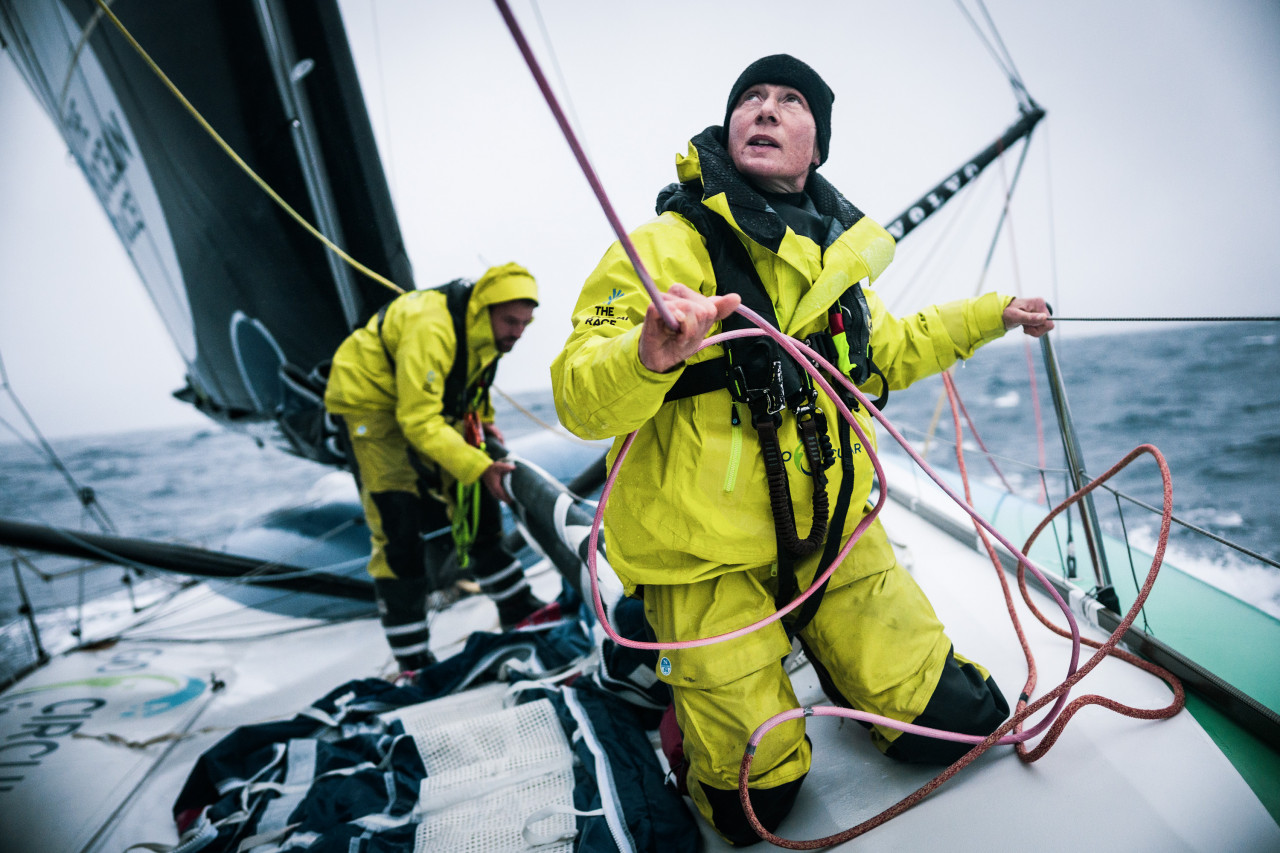
The British sailor Abby Ehler told the IMOCA Class before Leg 3 of The Ocean Race that she had initially not wanted to take on that challenge with Kevin Escoffier’s Holcim-PRB, but had changed her mind after sailing on Leg 1.
Following discussions with her family, Ehler, 46, came to the conclusion that she would not be able to say she had completed her fourth The Ocean Race if she skipped the marathon 12,750-nautical mile stage through the Southern Ocean from Cape Town to Itajai.
Now, more than two weeks after she stepped ashore in Brazil, where Holcim-PRB finished runner-up behind Team Malizia, we caught up with Ehler – who is back home in Britain – to find out how she got on.
So Abby, was Leg 3 as bad as you thought it might be?
Well, it could have been a hell of lot worse in terms of the weather. The first couple of weeks were not your typical Southern Ocean low pressure systems, with big seas and cold winds. So I think we were blessed with the conditions for the first couple of weeks. And then we also had a week of respite in the middle where there was hardly any wind – and that allowed us to catch up on boat work, on sleep, and just take a raincheck on everything and get some normality back on board. It wasn’t until the last few days before the Horn, and then that section from the Horn up to Itajai, where we hit that low pressure system and had a few technical issues, that it got really tough.
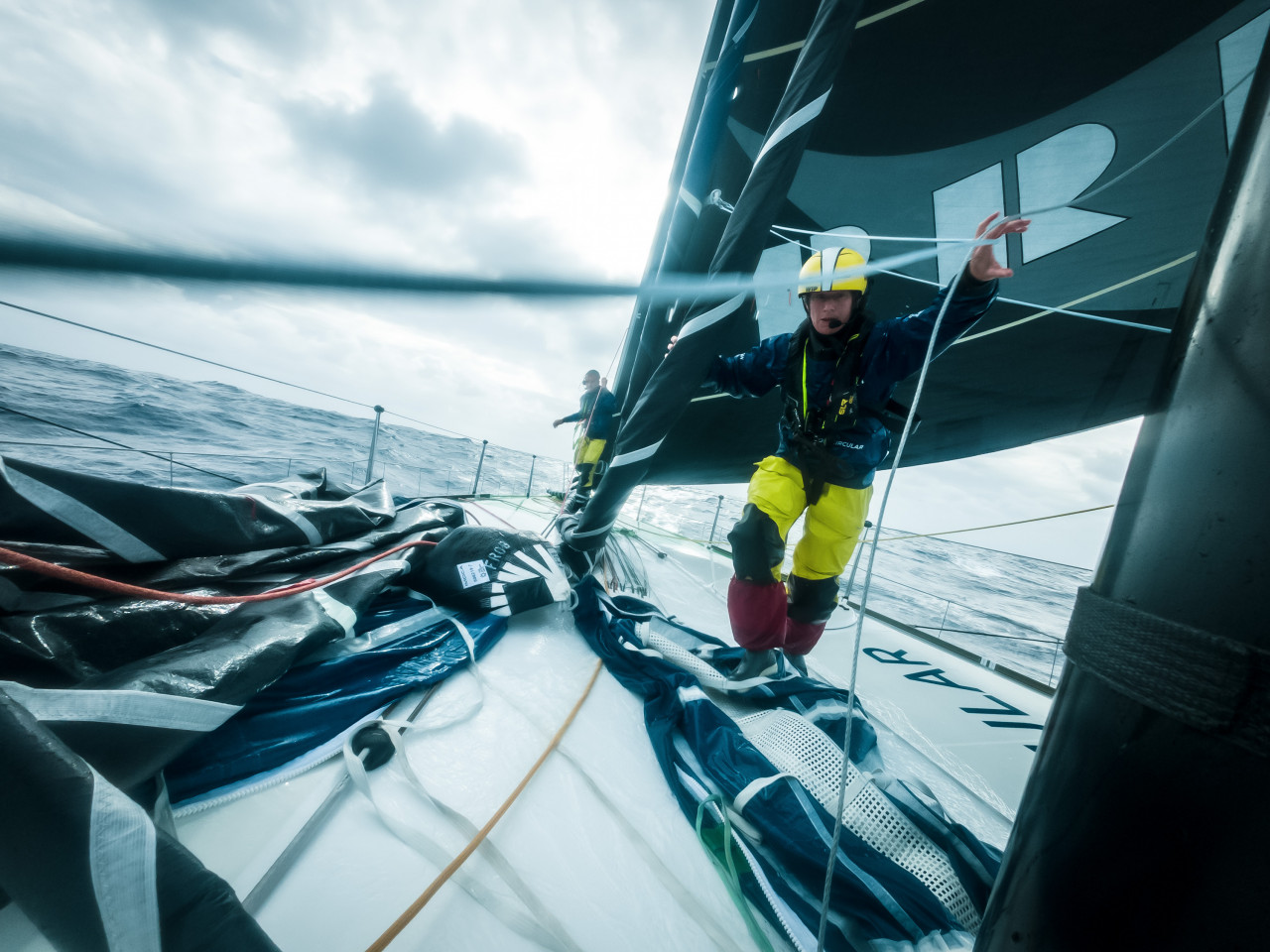 © Julien Champolion | polaRYSE | Holcim-PRB
© Julien Champolion | polaRYSE | Holcim-PRB
What about the deep exhaustion you must have been feeling by the time you got to Itajai?
I think it was only when we were ashore that I realised how burnt out we all were. You could see it in people’s faces and in their eyes. I don’t think I realised quite how tired I was during the leg when you are just existing watch-to-watch, rather than being 110% all the time. You are not getting a full night’s sleep and even the off-watch time that you are getting is not really quality sleep – it’s very on and off with interruptions because of nose-dives, or people talking, or winches being eased – whatever it is, it’s not quality sleep. And I think over that length of time – 35 days – it just builds up and you’re not really aware of it. You can’t step outside your body and look back and realise what’s happening because you are just digging deep to keep going.
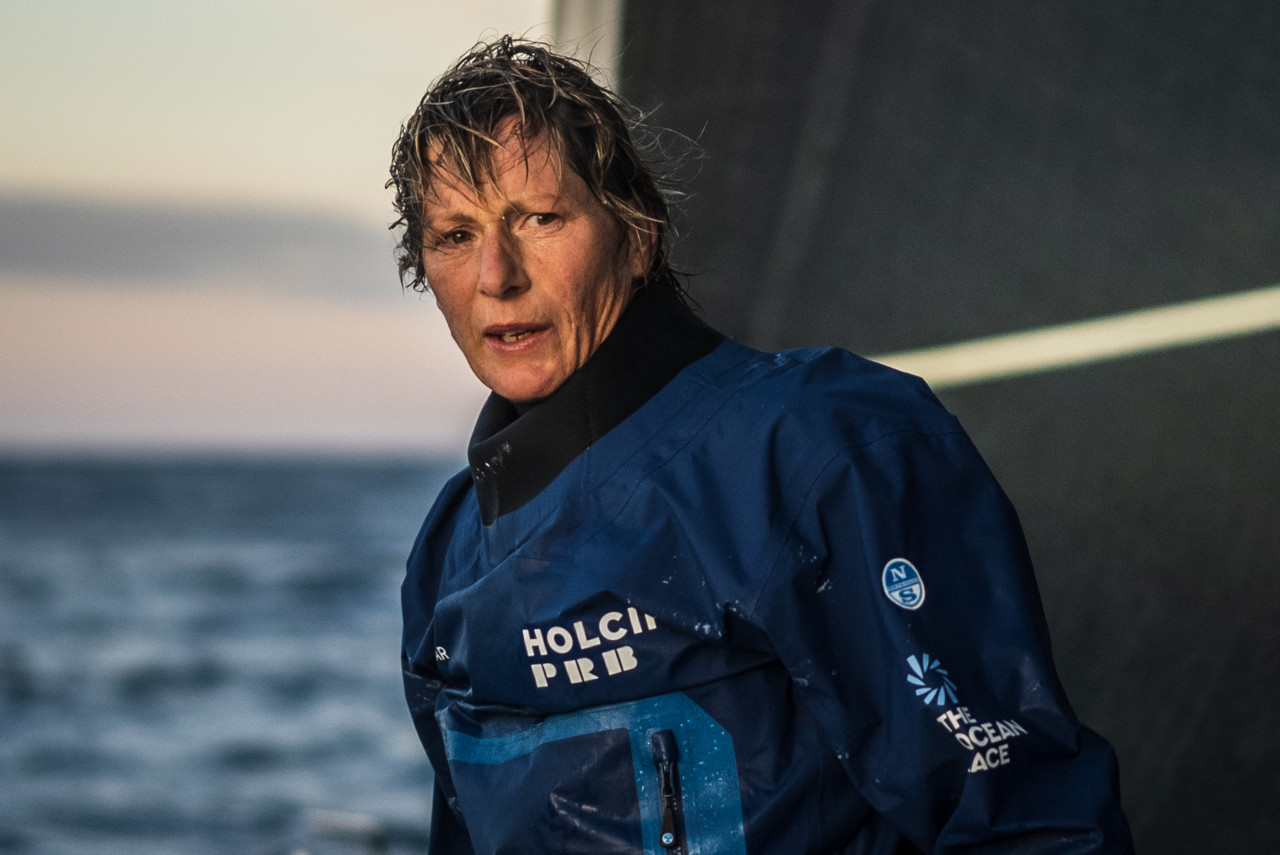 © Julien Champolion | polaRYSE | Holcim-PRB
© Julien Champolion | polaRYSE | Holcim-PRB
Before you set off you guessed that the IMOCA would be a tougher experience fully-crewed in the Southern Ocean than the VO65s. Did that prove to be the case?
Yes, I would still err on the side of saying it’s worse on the IMOCA. And that surprises a lot of people because they say ‘well, you’re inside and you’re not exposed to the elements.’ But to be honest, the motion of the boat is so brutal and almost sometimes quite violent compared to the 65, which is a dampened version of that. With the 65s, you know the boat is surfing a wave and then it’s like a slow deceleration and then off you go again. It’s almost like you can feel the boat, and you don’t need to be hanging on all the time because it’s a lot less impactful.
On the IMOCA, when you have more than 14 knots of breeze, the boat is doing 20 knots-plus consistently and it’s like being in a RIB – a constant slam, slam, slam over the waves. And you just have to hang on because if you don’t, the chances are you are going to get thrown somewhere and do yourself an injury. When we got to Brazil we did a post-leg check on our weight and muscle mass. I hadn’t lost a lot of muscle mass, which you’d expect to happen on a leg where you are effectively sitting down the whole time. But I think that just goes to prove that you’re in tension the whole time, so it’s a different sort of physical challenge.
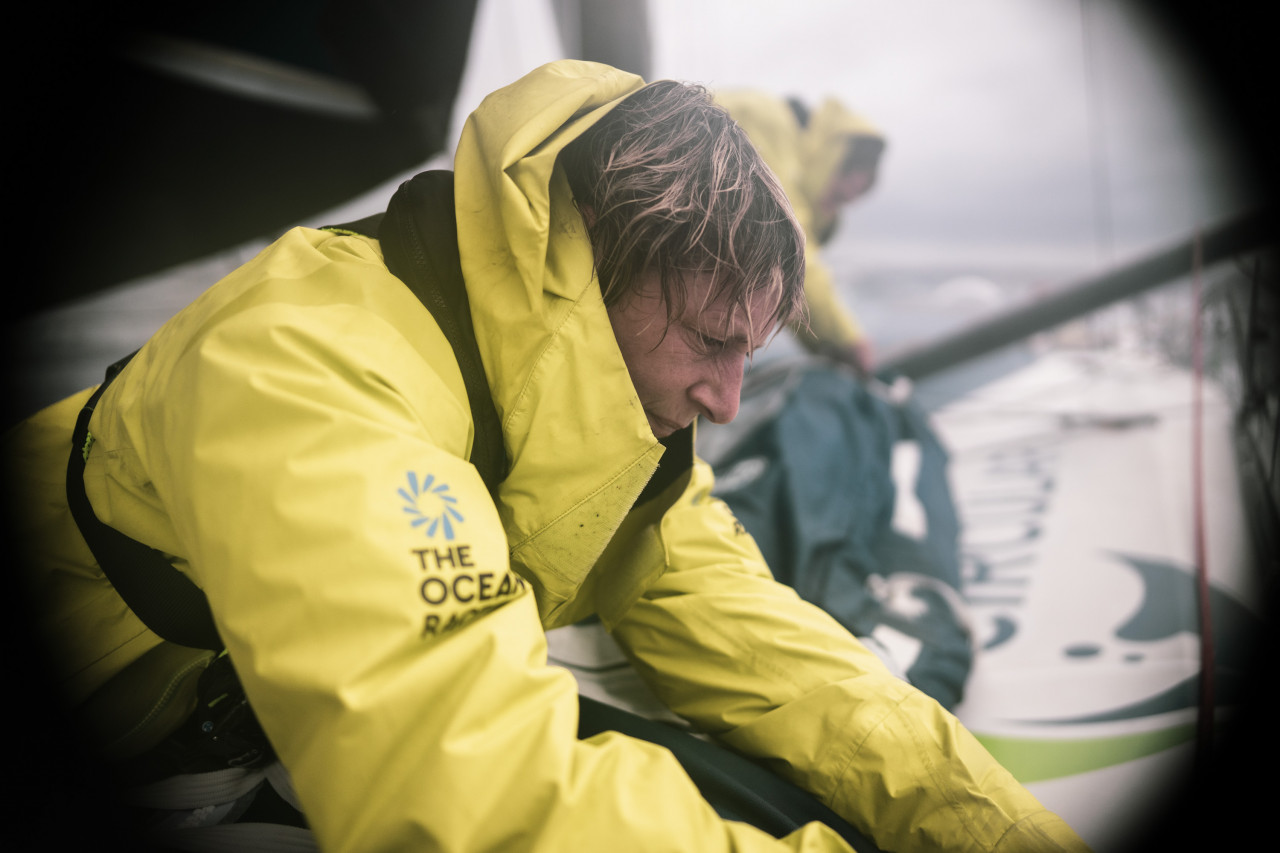 © Julien Champolion | polaRYSE | Holcim-PRB
© Julien Champolion | polaRYSE | Holcim-PRB
Your worst moment?
I would say the final three days. We were in that low pressure system, we had a lot of breeze and big squalls and that was where we had an issue with the pilot and a crash gybe. We were at low reserves in terms of our energy supply. And mentally at that stage you can see the finish line and it’s easy to let your guard down a little bit because you feel the finish is just around the corner. To take a hit like that, it felt like we had to really dig deep to do the repairs and get back on our feet. The reality that we had lost out to Malizia, and we couldn’t gain those miles back, combined to make it a hard blow.
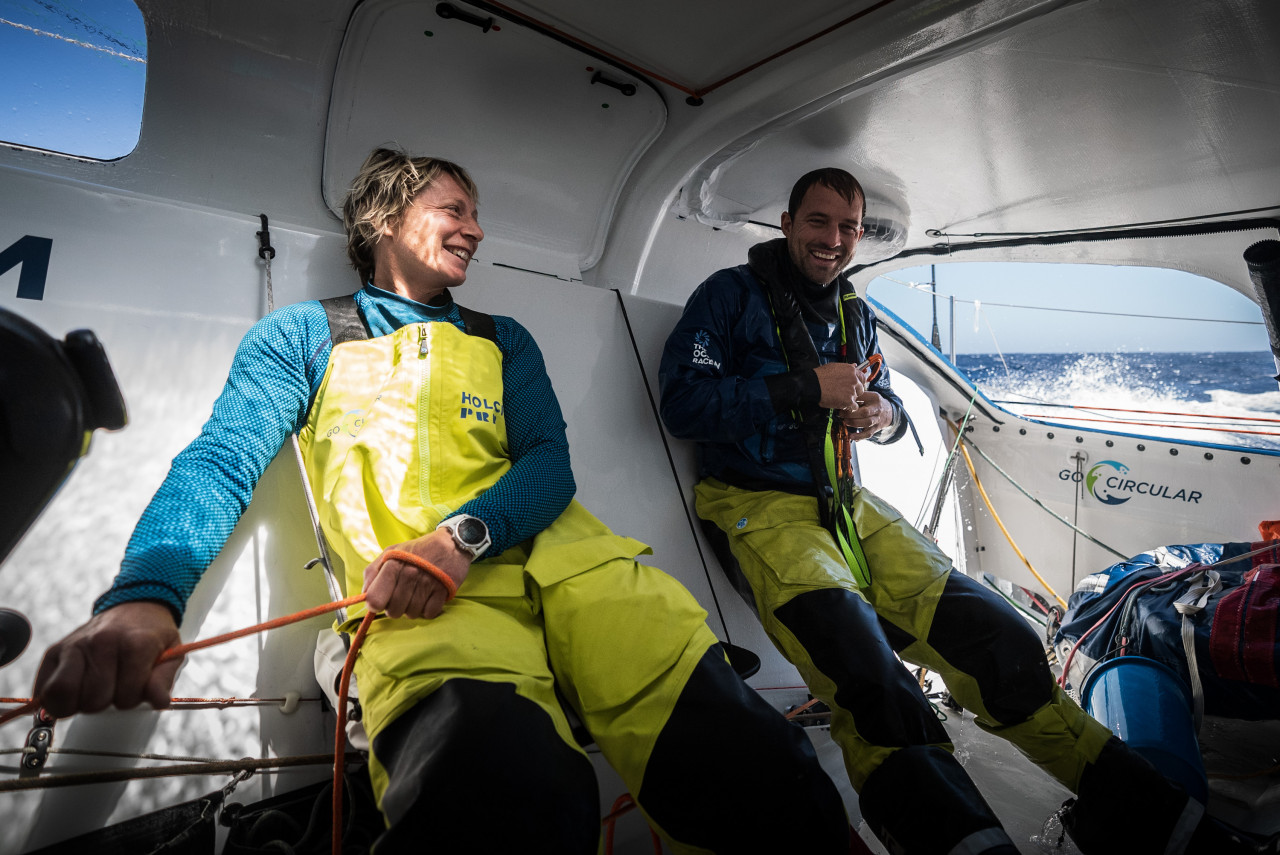 © Julien Champolion | polaRYSE | Holcim-PRB
© Julien Champolion | polaRYSE | Holcim-PRB
The Holcim-PRB team has dropped only one point so far. It has been a superb start to the race for your team. What’s been the secret of your success?
I think it’s a combination to be honest. I would not put it down to one sole thing. But I think the boat is a weapon. And it’s new and yes, it’s untested but it has so much potential. It’s at the start of its journey. Kevin himself…I mean, he is so enthusiastic and he has so much energy. If I had a tenth of his energy I would be happy. And being able to maintain that level of intensity, means it trickles down to the team – the sailors and the shore team – and that’s what drives the project in a great direction.
And I think Kevin’s surrounded himself with great people. The team that he put together for the first few legs was a really well-balanced group in terms of skills and personalities, bringing on Tom Laperche, the calmness of Sam Goodchild and me adding some technical skills. It just worked and worked exceptionally well. So it’s a combination of factors, but ultimately Kevin is a leader and with his level of enthusiasm, intensity and passion, it’s hard not to be drawn in and be part of that journey.
Thanks Abby.
Abby will re-join Holcim-PRB for Leg 5 from Newport to Aarhus.
Ed Gorman
Teams info
The Transat CIC: a spectacular start!
Brittany turned on its best Spring sailing weather – sunshine, puffy cumulus clouds and a decent 10-15kts of Westerly wind – to send the 48 strong Transat CIC fleet on its way from Lorient towards New York for the start …
•••Charlie Dalin: Raring to go on his first solo The Transat CIC
It’s good to see Charlie Dalin back where he belongs, at the helm of his almost brand new Guillaume Verdier IMOCA, Macif Santé Prévoyance, ready to take on the north Atlantic in The Transat CIC.
•••